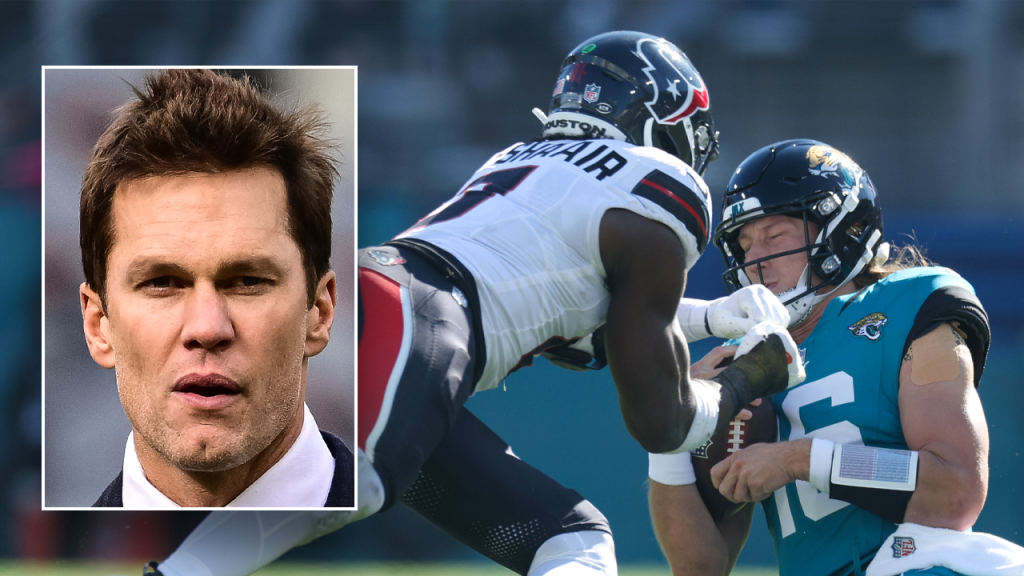The suspension of Houston Texans captain Azeez Al-Shaair for three games has emerged as a significant topic of discussion following his controversial hit on Jacksonville Jaguars quarterback Trevor Lawrence during an NFL Week 13 game. As Lawrence attempted to slide to avoid a hit, Al-Shaair’s actions led to a major confrontation on the field and ultimately resulted in his ejection. Subsequent assessments of Lawrence’s condition revealed that he suffered a concussion, ruling him out for the remainder of the game. In reflecting on this incident, Tom Brady, the legendary quarterback turned Fox broadcaster, shared his perspective during an appearance on “The Herd with Colin Cowherd.” He conveyed mixed feelings about the hit, drawing on his own experiences in the league and the increasingly protective measures implemented for player safety.
Brady recounted a personal encounter from 2001 when he was hit hard by Nate Clements while attempting to slide, highlighting how such experiences shape a player’s awareness during games. He emphasized the speed of the game and the aggressiveness of the defense, acknowledging that the NFL has made significant strides in protecting players, particularly in terms of hits to the head and neck areas and how defensive players approach quarterbacks who are sliding. This evolving safety framework is also contrasted with the reality that quarterbacks are increasingly more mobile in today’s game, often choosing to run the ball like their more agile counterparts.
Regarding Al-Shaair’s suspension, the NFL determined that he was at fault for the hit, indicating that he could have adjusted his trajectory as the play unfolded. This reinforces the league’s commitment to player safety but also brings forth questions about the responsibilities of offensive players, particularly quarterbacks. Brady raised an important point about the risks that come with quarterbacks who frequently run. He noted that while it’s an impressive skill set, it places them in precarious situations during plays. The expectation that defenders should alter their designs in such high-impact situations could burden them excessively.
Brady took issue with the term “dirty player,” often used by fans in discussions surrounding Al-Shaair’s actions, especially since past incidents were cited by the league when determining his punishment. He argued against the singular focus on the defensive player for incidents that escalate during competitive play, suggesting that consequences should also apply to offensive players who put themselves at risk by failing to slide properly. He reiterated the necessity of both sides—offense and defense—adapting their play styles to ensure safety.
The former quarterback acknowledged the speed and intensity of the NFL, noting that decisions need to be made rapidly under pressure, which can lead to miscalculations, as demonstrated by Al-Shaair’s hit on Lawrence. The reality is that such moments are inherent to the sport, and quick, instinctual decisions made under duress may not always align with the safety protocols established by the league. This analysis reflects a broader dialogue on how players adapt to and uphold both the fiercely competitive nature of the game alongside its safety regulations.
In summary, the incident surrounding Azeez Al-Shaair’s hit on Trevor Lawrence raises critical conversations about player safety in the NFL, the nature of aggressiveness on both sides of the ball, and accountability for player conduct. As Tom Brady articulated, the interplay between rapid decision-making, the physicality of the sport, and the evolving rules designed to protect players underscores an ongoing challenge within football. The balance between maintaining the game’s competitive spirit while safeguarding the health of its players continues to provoke dialogue and requires comprehensive consideration by all stakeholders involved.

